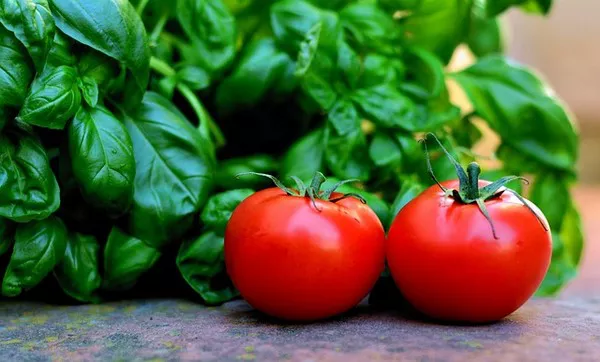Tomatoes (Solanum lycopersicum) are a staple crop worldwide, appreciated for their vibrant color, rich flavor, and numerous culinary uses. The successful cultivation of tomatoes heavily relies on proper pollination, a vital process that facilitates the transfer of pollen from the male reproductive structures (anthers) to the female reproductive structures (stigma) of the flowers. While wind and insects play a role in pollination, human intervention can significantly enhance the yield and quality of tomato crops. This article discusses various techniques and best practices for pollinating tomato plants.
The Importance of Pollination in Tomato Cultivation
Pollination is the foundation of reproductive success in flowering plants, including tomatoes. For tomatoes, successful pollination results in the formation of fruits, each housing numerous seeds. Proper pollination influences the size, shape, and evenness of fruit development, impacting the overall yield and quality of the crop.
Natural Pollination Mechanisms
In their natural habitat, tomatoes rely on both wind and insect pollinators to transfer pollen. Wind can dislodge pollen from the anthers, and insects such as bees facilitate cross-pollination by transferring pollen from one flower to another. However, outdoor and greenhouse tomato cultivation may sometimes face limitations in natural pollination due to factors like weather conditions, limited bee populations, or restricted access to pollen.
Manual Pollination Techniques
To overcome these limitations and ensure optimal fruit set, manual pollination techniques can be employed. Manual pollination involves transferring pollen from the anthers of one flower to the stigma of another flower, facilitating fertilization and subsequent fruit development. Here are some effective manual pollination techniques:
Shaking: Gently tapping or shaking the tomato plant can help dislodge pollen from the anthers. This method mimics the natural process of wind-assisted pollination and can be particularly useful in greenhouse environments.
Brushing: Using a soft, fine-bristle brush (like a paintbrush) to transfer pollen from one flower to another is a precise and controlled technique. Gently brush the anthers of one flower and then transfer the collected pollen to the stigma of another flower.
Cotton Swab: Similar to the brushing technique, a cotton swab can be used to transfer pollen. Carefully dab the anthers to collect pollen, and then apply it to the stigma.
Hand Pollination: With clean hands or gloved fingers, gently touch the anthers to collect pollen and then transfer it to the stigma. Be cautious not to damage the flower during this process.
Best Practices for Manual Pollination
While manual pollination offers a targeted solution, it requires attention to detail and adherence to best practices to ensure success:
Timing: Pollination is most effective when flowers are fully open and receptive. The stigma should be visibly receptive, often indicated by a slightly sticky or moist appearance.
Frequency: Regular monitoring of the tomato flowers is essential. Pollination should be conducted daily during the flowering period to ensure that each flower is adequately pollinated for optimal fruit set.
Hygiene: Cleanliness is crucial to prevent the introduction of contaminants that could harm the plant or interfere with the pollination process. Use clean tools and avoid touching flowers with hands that might carry unwanted substances.
Variety Consideration: Different tomato varieties have varying degrees of dependence on pollinators. Some are self-pollinating (able to set fruit without external assistance), while others require cross-pollination. Understanding the pollination requirements of the specific tomato variety you’re cultivating will guide your pollination strategy.
Placement of Pollen: When manually transferring pollen, ensure that it comes into contact with the stigma. This is where fertilization occurs, leading to successful fruit development.
Attracting Pollinators
While manual pollination is a reliable technique, enhancing natural pollination can be equally beneficial. Encouraging the presence of pollinators like bees in your growing area can improve overall pollination efficiency. Some strategies include:
Planting Pollinator-Friendly Flowers: Surround your tomato plants with flowering plants that attract bees and other pollinators. Marigolds, zinnias, and cosmos are excellent choices.
Providing Shelter: Set up bee houses or shelters to encourage nesting and breeding of native bees.
Reducing Pesticide Use: Limit the use of pesticides, especially during peak flowering periods. This helps protect pollinators and ensures their continued presence in your growing area.
Conclusion
Effective pollination is a cornerstone of successful tomato cultivation, impacting both the quantity and quality of the crop. While natural pollination mechanisms exist, manual pollination techniques can significantly enhance fruit set and overall yields, especially in controlled environments. By understanding the specific requirements of your tomato variety, practicing proper timing and hygiene, and considering pollinator-friendly practices, you can achieve optimal pollination and ensure a bountiful tomato harvest. Whether you’re a small-scale gardener or a commercial grower, these techniques can help you produce tomatoes that are not only visually appealing but also rich in flavor and nutritional value.


